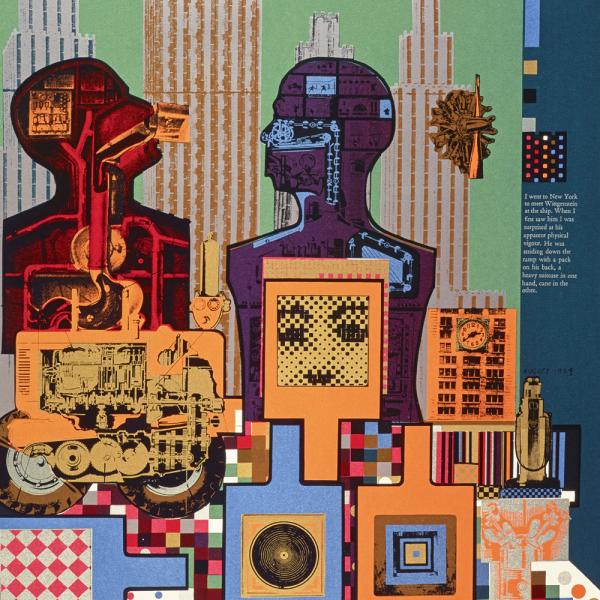Screenprinting is a sophisticated form of stencilling that allows photographic images to be reproduced by exploiting the tiny dots that these images are made up of. Up until the early 1960s it tended to be used for making high-quality commercial reproductions. It was spurned by most artists because of its perceived lack of ‘artistic’ input; because the hand of the artist was nowhere to be seen. But it was precisely this mechanical exactitude that attracted such artists as Eduardo Paolozzi – and Andy Warhol.

Paolozzi was above all a collage artist and he created paper collages, such as those that form the image in Metalization of a Dream (1963), specifically to be made into screenprints.
He wanted the image to be reproduced with photographic accuracy. But the master printmaker, Chris Prater, who Paolozzi turned to for help in making this and many of his subsequent prints, realised that there was a greater artistic potential to screenprinting than this. He ran a printmaking workshop in London, called Kelpra Studio, to help artists to realise this potential.
Yes, screenprinting could reproduce an image accurately, but by changing the screens that provided the different colours in the print, he showed artists that they could create strikingly different colour variations on the same theme, sometimes completely altering the expressive impact of each successive print.
This is what Paolozzi did, and for the first time, with Metalization of a Dream in 1963. Using Chris Prater’s technical expertise, he changed the colour combinations of each impression of the edition of forty prints. This was not simply a change in the background colour, but also of most of the colours that made up the two machine-personages in the image. It is almost as if a new print were being created. And, in a way, it was.
Every print in the edition had a unique colour combination. In many of Paolozzi’s subsequent prints, and also in his print portfolios, the artist continued to make similar colour variations. Indeed, in many of his prints in the 1960s and 1970s Paolozzi created grids of images and abstract shapes that lent themselves particularly well to such kaleidoscopic colour changes. It is true to say that Metalization of a Dream was not only a milestone in Paolozzi’s printmaking career, but also helped kick-start the 1960s print revolution.

